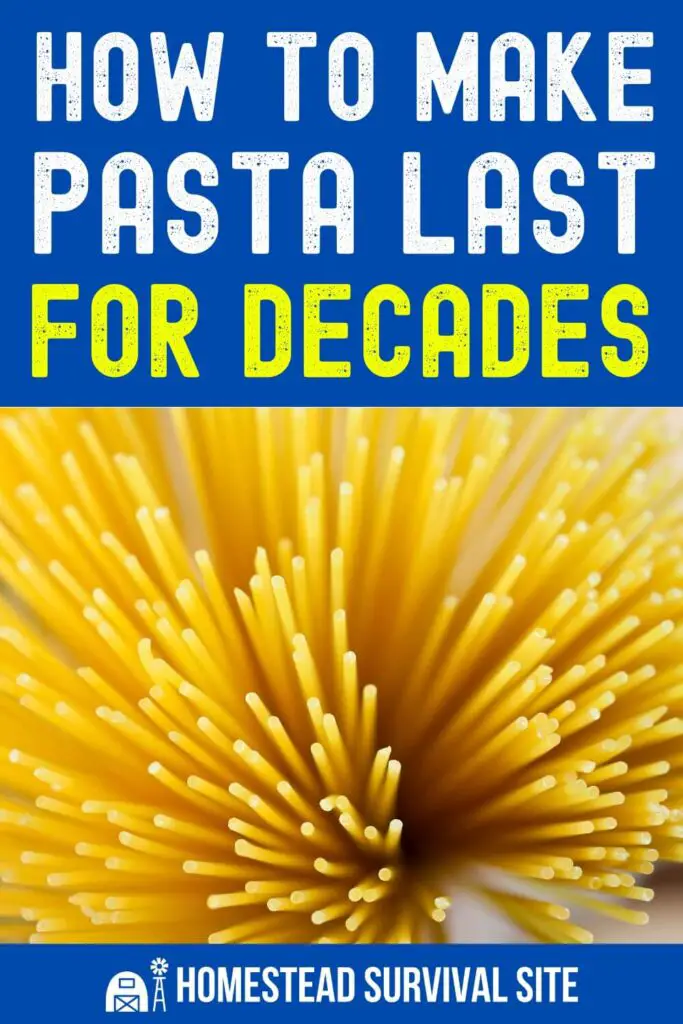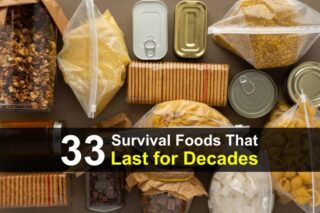Estimated reading time: 7 minutes
When you are thinking about a food supply that will keep you alive after a major event, you’re thinking long-term with no electricity. In that case, dry goods are your best option. However, storing food long-term can be challenging due to various environmental factors that threaten its quality and safety.
If you’re spending your money buying food to keep you going when there are no available grocery stores, you don’t want it to go to waste before you have the chance to eat it. You have to put in the effort now to make sure the food you’re buying is going to be safe to eat.
You’ve got a few enemies you’ll be battling when it comes to storing any food for years to come. What are the enemies?
Want to save this post for later? Click Here to Pin It On Pinterest!
Light
Exposure to light, particularly sunlight, can degrade food by breaking down nutrients and causing chemical reactions that alter its taste and texture. For dry goods like pasta, light can lead to discoloration and flavor changes, making the food less palatable over time.
In other words, it gets stale. Cooking the pasta will soften it, but you’ll still get a funky taste, and the texture will be off.
Heat
Heat is one of the most significant threats to long-term food storage. High temperatures accelerate the degradation of food by promoting the growth of bacteria and mold, even in dry foods. It can also cause fats to become rancid.
Wheat products will go rancid much faster, as soon as a few months. So, while it might be healthier, you’ll want to go with bleached flour products.
Humidity
Moisture is a critical factor in food spoilage. High humidity can lead to the growth of mold, mildew, and bacteria. For dry foods like pasta, exposure to moisture can result in clumping, softening, and eventual spoilage. Even small amounts of moisture can ruin an entire batch of stored pasta.
Pests
Insects, rodents, and other pests pose a significant risk to food storage. They can chew through packaging, lay eggs, and contaminate food with bacteria and waste. Once a pest infestation occurs, it can be challenging to salvage the food. Because pasta is flour-based, you’re also going to be dealing with weevils.
Oxygen
Oxygen equals moisture, which promotes the growth of bacteria and fungi and can cause fats to oxidize, leading to rancidity. For dry foods like pasta, exposure to oxygen can lead to staleness and a decrease in quality. Additionally, oxygen can increase the survival of any insect eggs that might be present, allowing them to hatch and infest the food.
Steps to Ensure Pasta Lasts for Decades
To store pasta for the long term, it’s essential to protect it from the above-mentioned threats. The following are some proven methods to ensure your pasta remains safe, nutritious, and edible for years.
Storing single portions or enough to feed the family a single meal is ideal. Every time you open a package, you are letting in moisture and ultimately shortening the shelf life.
1. Mylar Bags with Oxygen Absorbers
Mylar bags are an excellent choice for long-term food storage. This is the Cadillac of food storage. They are available in many sizes to accommodate different portions. The bags block light, which is one of your biggest enemies. Pests are not going to get into the bags when properly sealed.
Rodents are not guaranteed to leave the bags alone, but the material is thick enough it won’t be easy for them. However, you can solve that problem by putting them in five-gallon buckets (see below).
The airtight and moisture-proof seal will eliminate the other threats. When combined with oxygen absorbers, which remove the oxygen from the sealed bag, Mylar bags can keep pasta fresh for decades.
How to Use: Place the pasta in a Mylar bag, add the appropriate size oxygen absorber, suck any extra air out of the bag using a vacuum hose, then seal the bag using a heat sealer or iron. Store the sealed bags in a cool, dark place. For added protection, put the bags inside a five-gallon bucket with a gamma-seal lid.
2. Vacuum-Sealed Bags and Jars
Vacuum sealing is another quick and easy method for storing pasta. This technique removes air from the packaging, reducing the risk of oxidation and pest infestation. Vacuum-sealed bags and jars are particularly useful for shorter-term storage or for foods that you plan to rotate through more frequently.
How to Use: Place the pasta in a vacuum-sealable bag, (like a Foodsaver), or jar and use a vacuum sealer to remove the air. For jars, ensure the lid is tightly secured to maintain the vacuum seal. While this method is excellent for maintaining freshness, it may not be as effective as Mylar bags for decades-long storage. Sunlight could still cause some problems.
3. Five-Gallon Buckets with Gamma Seal Lids
For bulk storage, five-gallon buckets with Gamma seal lids are ideal. These buckets are made from food-grade plastic and provide a sturdy, pest-resistant environment. The Gamma seal lids are specially designed to create an airtight, watertight seal while allowing easy access to the contents when needed.
How to Use: Line the bucket with a five-gallon Mylar bag and fill it with pasta. Add oxygen absorbers before sealing the Mylar bag and then close the bucket with a Gamma seal lid. This combination offers double protection against pests, moisture, and air, ensuring the pasta remains safe for long-term storage.
4. Freezer First
Most flour products have weevil eggs in them, but that's not a problem. You can kill off the weevil eggs and prevent them from hatching while your pasta is in storage by putting it in the freezer a few days before putting it in your long-term storage.
If you’ve bought a bag/box of pasta, put it in the freezer. Then remove the pasta from the packaging and use one of the above methods for long-term storage.
Best Places in the House to Store Pasta
Where you store your food is just as important as the method you use. Location matters.
The best place to store pasta is in a cool, dark, and dry area of your home. Basements, pantries, and closets are ideal, provided they are not prone to dampness. You can use a dehumidifier as an extra layer of protection if you live in an area prone to high humidity.
Some additional factors to consider:
Avoiding Temperature Fluctuations: Temperature stability is crucial for long-term food storage. Avoid storing pasta in areas where temperatures fluctuate from one extreme to the next. Avoid places like attics and garages. Don’t set up your storage near appliances that put off heat either. Your temperature goal should be between 50 and 70 degrees F.
Off the Floor: Keep your storage containers off the floor to avoid potential water damage from floods or spills. Use shelves, pallets, or risers to elevate your storage buckets and containers. Ideally, you should aim for six inches off the ground. Never put your buckets or food directly on cement floors. The cement will leach chemicals into the plastic, cardboard, or whatever the food is in.
Pest Control: Ensure the storage area is clean and free of pests. Regularly check the area for signs of insects or rodents. Use traps or deterrents to reduce the chances of an issue. Sealing any cracks or gaps in walls and floors can also help prevent pests from entering the storage area. Sealing your pasta in buckets ensures the pests aren’t attracted to the area.
Like this post? Don't Forget to Pin It On Pinterest!
You May Also Like:












